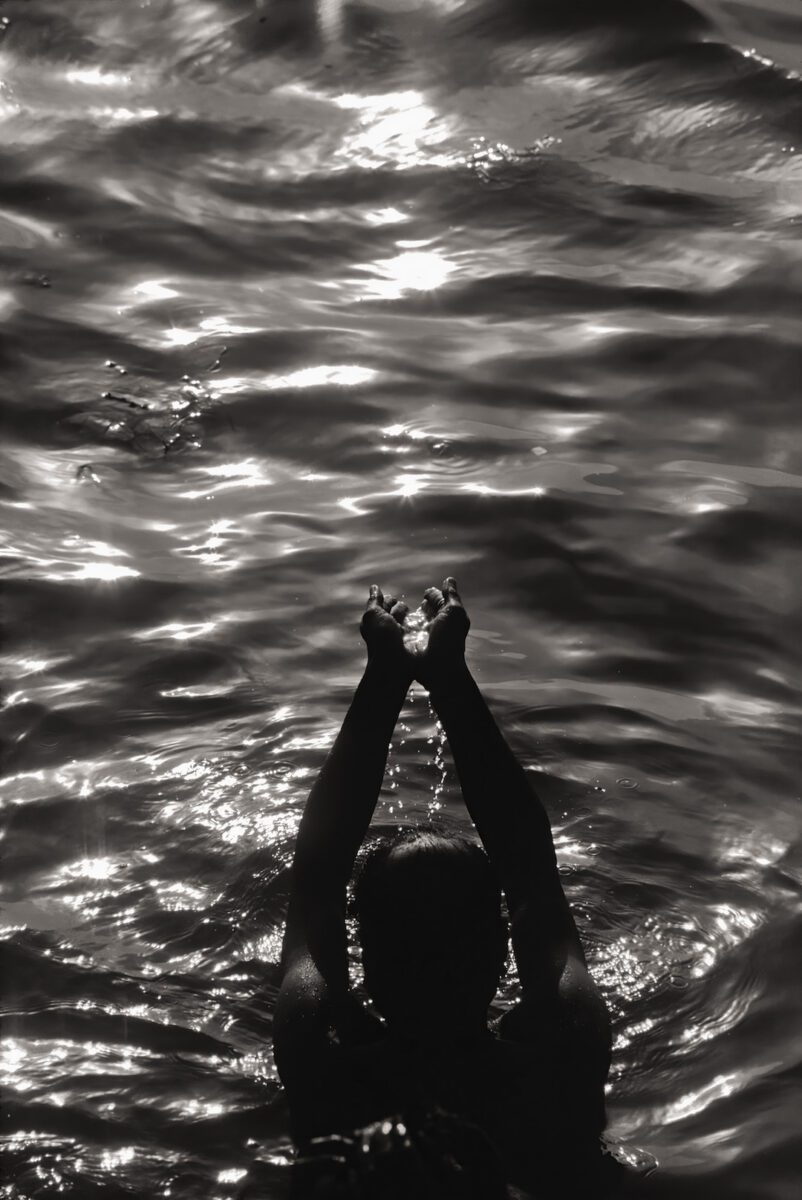“We are draining humanity’s lifeblood through vampiric overconsumption and unsustainable use, and evaporating it through global heating,” remarked United Nations secretary general António Guterres at the UN 2023 Water Conference. According to the UN, a quarter of the world’s population does not have access to safe drinking water, whilst half lacks basic sanitation. If one goes looking for statistics, there are plenty more to be found — the average sea level has risen over eight inches since 1880; 80% of waste dumped into fresh water sources is untreated, resulting in serious illnesses and death; ice caps and glaciers are melting at such a rate that cities and low-lying countries can be easily inundated; and as only 3% of the world’s water is fresh water, by 2025, two-thirds of the world’s population will experience water shortages. Even if we don’t consider the macrocosmic ramifications of a world that, at its worst, might run out of clean water to sustain life, and, at its most catastrophic, faces the risk of being annihilated by the rising sea levels, we only need to look inward — human beings are composed of 60% water, and at best can survive for seven days without it. These facts show us that water is an essential – yet finite – commodity.

Magnum photojournalist Ian Berry’s photo-book Water (2023) is a timely visual documentation of humanity’s complex relationship with water, one that’s threatened by climate change. The idea for Water came to Berry whilst on assignment, reporting on Greenland’s melting glaciers for the non-profit organisation The Climate Group. For the next 15 years, he travelled the globe covering “wildfires, droughts, floods, pollution, deforestation and the many other areas of life where man was working to his own profit without consideration of what that work might mean in the long run.” Comprising 172 black and white images, with a foreword by Berry’s wife, journalist Kathie Webber, Water documents “man’s neglect and greedy usage of the natural resources of our planet.” In the kickstarter pitch, Berry said that Water is not a “gloomy book, full of man’s failures”. Neither is it a “political work” nor can it explain the “science behind what is happening throughout the world” or “supply the answers”. Instead, it comprises images he found “most memorable when on assignment for stories that illustrate how water shapes our lives.”
Indian women protesting the construction of the Narmada dam. Cambodian children playing under the stilts of their house in the Tonle Sap river, which is prone to annual floods. Ethiopian women affected by famine waiting for aid. Children drinking from a polluted stream in Cape Province in South Africa. Ghanaian women and children attempting to draw water from an unclean well. The bulk of the book comprises images that hone in on the lives of people and children disproportionately affected by climate change. What’s not accounted for in these pictures is the actual loss of lives and livelihood. But as the eye rests on each image — including a mother and baby who have no choice but to consume water contaminated with arsenic — we are nonetheless confronted with stark truths.

The images of human suffering are offset by shots of sublime natural beauty including The Nelchina Glacier in the US, and New Zealand’s Fox Glacier. Yet these awe-inspiring landscapes shouldn’t lull the reader into complacency. Considering the speed at which glaciers are melting has doubled in the last 20 years, the subtext of these particular images is that catastrophe is waiting to happen, unless we mend our ways. In recent times, image-makers like Monty Kaplan, Marisol Mendez and Laura El Tantawy have documented people’s experience of water shortage in the face of climate change, whilst LaToya Ruby Frazier spent five years documenting the Flint Water Crisis in Michigan. To add to the growing list, Berry’s Water, despite not being a political work, is a necessary nudge to rethink our relationship with our planet.
Water, Ian Berry | Published by GOST Books
Words: Shyama Laxman
Image Credits:
1. Near Palmer, Alaska, United States © Ian Berry / Magnum Photos. The Nelchina Glacier in the Chugach Mountains near Little Nelchina on the Glenn Highway.
2. Varanasi (Benares), Uttar Pradesh, India © Ian Berry / Magnum Photos. Dawn is the time when devout Hindus come down to the holy river Ganges to wash themselves as part of the religious ritual and pray.
3. Northern Transvaal, South Africa © Ian Berry / Magnum Photos. Drought turns farming areas into dust bowls where nothing can grow well. The winds sweep the dust away, leaving bedrock and subsoil behind.





